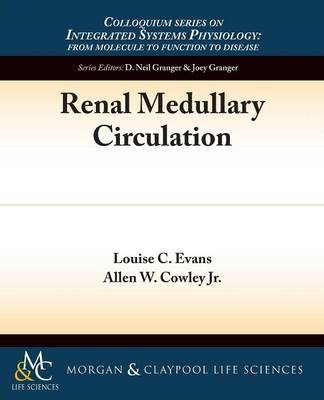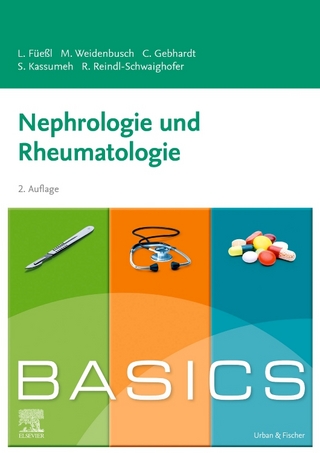
Renal Medullary Circulation
Morgan & Claypool Publishers (Verlag)
978-1-61504-228-9 (ISBN)
Louise C. Evans, Ph.D., received her doctorate degree from the Department of Molecular Physiology at the University of Edinburgh/British Heart Foundation Centre for Cardiovascular Science, Edinburgh, U.K. She is currently a Postdoctoral Fellow in Dr. Cowley's lab, in the Department of Physiology at the Medical College of Wisconsin. Dr. Evans' research interests include the events involved in the initiation and progression of salt-sensitive hypertension, with a particular focus on role of the renal medulla. Allen W. Cowley Jr., Ph.D., has been Professor and Chairman of the Department of Physiology at the Medical College of Wisconsin since 1980. He earned his doctorate in Physiology from Hahneman Medical College in Philadelphia, Pennsylvania, working with Dr. John Scott, after which he joined Dr. Arthur Guyton in the department of Physiology and Biophysics at the University of Mississippi Medical Center where he rose to the rank of Professor. Dr. Cowley has served as the President of the American Physiological Society (APS) as well as the President of the International Union of Physiological Sciences and Chairman of the Council for High Blood Pressure Research of the American Heart Association (AHA). He has received the Walter Cannon, the Ernest Starling, the Carl Wiggers, and Ray Daggs Awards from the APS and the Novartis Award from the Council of High Blood Pressure Research and the Distinguished Scientist Award of the AHA. His research has focused on advancing our understanding of the mechanisms that control blood pressure in normal and hypertensive states. Dr. Cowley has made seminal findings related to the role of the baroreceptor reflexes, the renin angiotensin system, and vasopressin in both the short- and long-term regulation of arterial blood pressure. His research has revealed the importance of the renal medullary circulation in sodium homeostasis and the longterm control or arterial pressure. He proposed the novel hypothesis and then demonstrated that small reductions of blood flow to medulla of the kidney can produce chronic hypertension. More recent work has determined the impact of arterial pressure on the production of oxidative stress and renal injury in the renal medulla of hypertensive rats. During the past decade, he has pioneered efforts to attach systems level biology to the genome providing novel insights into the location of genes that underlie complex disease planting the seeds for the field now referred to as "physiological genomics." He has published over 330 publications in peer-reviewed journals.
Introduction
Anatomy and Ultrastructure
Functional Roles of Medullary Blood Flow
Experimental Assessment of Medullary Perfusion
Pericytes and Non-Hormaonal Regulation of Vasa Recta Tone
Hormonal Regulation of Vasa Recta Tone
Reductions in Medullary Blood Flow Initiate Hypertension
The Dahl Salt-Sensitive Rat as a Model of Reduced Medullary Blood Flow
References
Author Biographies
| Erscheint lt. Verlag | 30.8.2015 |
|---|---|
| Reihe/Serie | Colloquium Series on Integrated Systems Physiology: From Molecule to Function |
| Verlagsort | San Rafael |
| Sprache | englisch |
| Maße | 191 x 235 mm |
| Gewicht | 333 g |
| Themenwelt | Medizinische Fachgebiete ► Innere Medizin ► Nephrologie |
| Studium ► 1. Studienabschnitt (Vorklinik) ► Physiologie | |
| ISBN-10 | 1-61504-228-8 / 1615042288 |
| ISBN-13 | 978-1-61504-228-9 / 9781615042289 |
| Zustand | Neuware |
| Haben Sie eine Frage zum Produkt? |
aus dem Bereich


